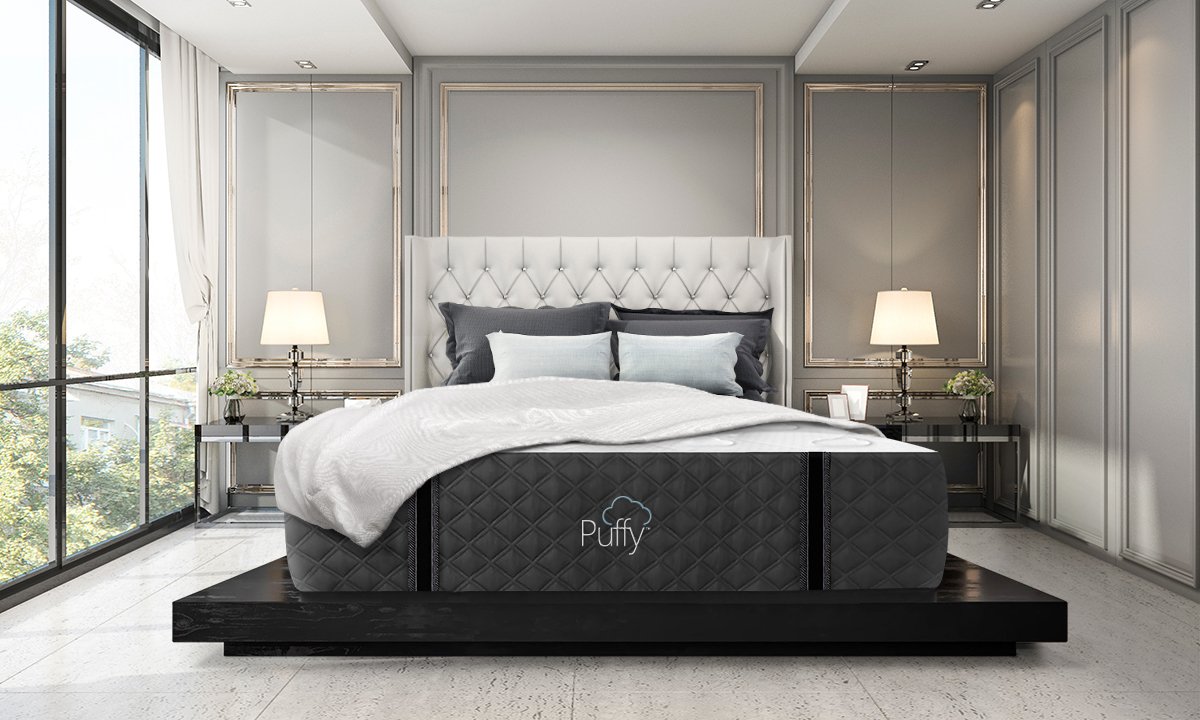Depression is a disease that affects millions of people every year. It comes with many symptoms, such as lack of interest in activities, mood shifts, and feelings of sadness. While these are the symptoms people expect, they may not realize that insomnia, interrupted sleep, and oversleeping can also be signs of depression. Sleep disorders such as these can also be the cause of clinical depression because the brain isn’t getting the rest it requires for you to function properly. In this article, we’re going to discuss the correlation between sleep and depression more closely.
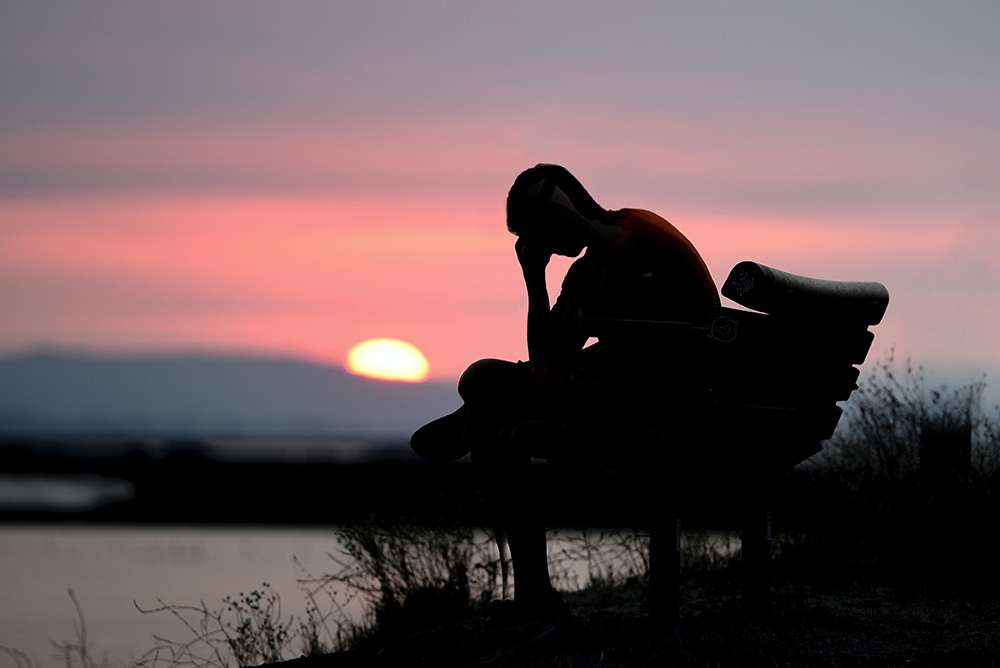
What is Depression?
Depression (Major Depressive Disorder) is a serious medical illness that negatively affects the body and mind. It causes overwhelming feelings of despair and can make you lose interest in activities and drastically alter your mood. It can lead to emotional and physical problems that will affect your everyday life if not properly treated.
Symptoms can range from mild to severe, and vary with every individual. Every human being is different. Therefore no case of depression is the same. Other symptoms of depression may include changes in appetite, trouble sleeping, increased fatigue, slow movement or speech, worthlessness, difficulty making decisions, and thoughts of death. Symptoms must persist for longer than two weeks for a medical professional to diagnose you with depression.
Depression is often associated with sadness, but normal sadness is different from depression. For example, when grieving the loss of a loved one, sadness comes and goes in waves. Feeling sad is normal, and often mixed with happy memories during a time of loss. While this sadness may be crippling, it will get better and become easier to cope with. Depression is a persistent feeling of sadness that doesn’t get better without treatment. Those who are experiencing grief are at a higher risk of developing depression.
Depression can affect anyone, but some people are at a higher risk of developing it than others. Genetics can play a huge role in depression. Those with a family history of depression are at a higher risk than others. Environmental factors such as abuse, neglect, poverty, and violence can also make people more vulnerable to depression. People who have low self-esteem, are easily triggered by stress, or who have negative attitudes are also at a higher risk for depression.
There are many different kinds of depression, and each type comes with its own set of symptoms. Some of the most common forms of depression include:
- Major Depressive Disorder (MDD): This form of depression is severe and can often have a serious impact on the patient’s quality of life. Their feelings of sadness may be so intense that they find it difficult to complete everyday tasks. They may lose interest in activities they once loved. Their illness may be so severe that they no longer feel as though life is worth living. A study showed that nearly 7% of Americans over the age of 18 had experienced MDD. This form of depression is typically treated with medication or therapy.
- Bipolar Disorder: While this is technically a mood disorder, people with it also tend to experience depression. The symptoms of Bipolar Disorder can often worsen the symptoms of depression. People who have Bipolar Disorder may experience extreme changes in mood, fatigue, loss of self-esteem, irritability, and indecision. This disorder is typically treated with medication.
- Postpartum Depression (PPD): With this, the hormone levels in a woman's body skyrockets during pregnancy and peaks directly after delivery. These hormones often bring frequent, uncontrollable shifts in mood. Some people call this “baby blues”. A woman may experience sadness, helplessness, mood swings, social withdrawal, trouble bonding with baby, appetite changes, anxiety, thoughts of harming herself or baby, and extreme fatigue if she is suffering from PPD. PPD does not affect every woman. It can last a few weeks or for an extended time. It is often treated with medication.
- Seasonal Affective Disorder (SAD): SAD is a form of depression that is seasonal. It affects most individuals during the winter months when there's less sunlight, and you’re forced to spend more time indoors. It is believed to be brought on by a disruption in the normal circadian rhythm of the body. SAD often goes undiagnosed, and most people don’t realize they suffer from it because it typically goes away during the warmer months. SAD can greatly affect sleep patterns which can worsen symptoms. It is often treated with light therapy.
The Link Between Depression and Sleep:
Sleep disorders brought on by depression or that initially caused it, to begin with, can make overcoming the illness much more difficult. When you don’t get the proper amount of rest, your brain has trouble functioning, which can cause heightened emotions. It can be challenging to control these emotions, which in turn heightens those symptoms of depression.
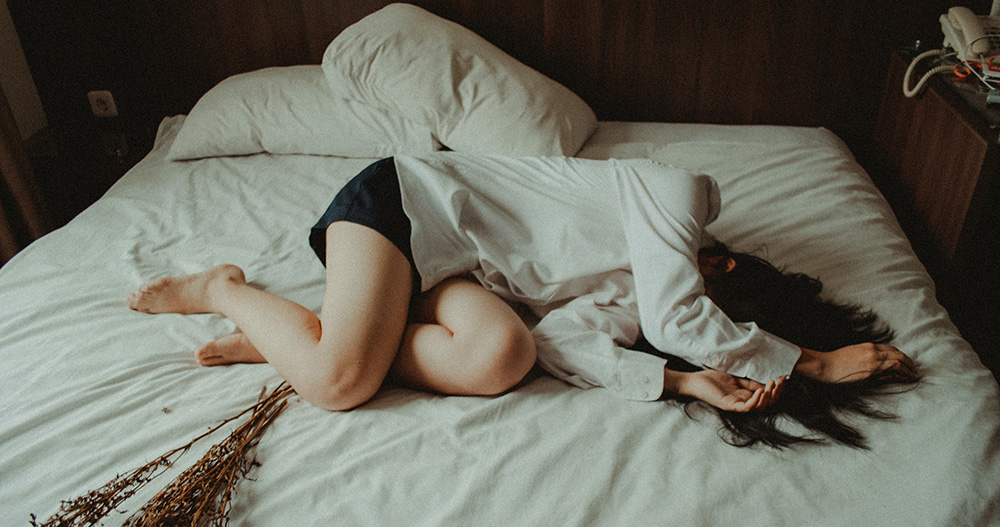
Your body needs 7-9 hours of restful sleep each night to function the next day properly. Lack of sleep or poor-quality sleep can have a massive negative influence on your life. You may not realize that poor sleep patterns can be the culprit if you’ve been feeling low lately. Small levels of sleep deprivation can steal little pieces of your happiness over time, eventually developing into more intense feelings of sadness. You may begin to lose enthusiasm, become irritable, or continuously feel sad. These things not only affect your mental and physical well-being but can also negatively affect your relationships. Depressed people tend to shy away from social interaction, which can intensify those feelings of sadness and make sleep harder to come by.
The link between sleep and depression has been widely studied globally, and new studies are constantly taking place. It’s a very complex relationship that is different with every individual. Studies have proven that those with insomnia have higher levels of depression and anxiety than those who sleep normally. They’re ten times more likely to suffer from depression and seventeen times more likely to experience anxiety. The more an individual’s sleep pattern is interrupted, the higher their risk for anxiety and depression.
The link between sleep and depression is a vicious cycle. Depression can cause sleep disorders to arise, but in turn, sleep issues can cause depression. These two problems go hand in hand. Once cannot be treated without addressing the other if the treatment is to be successful.
REM Sleep
Rapid Eye Movement Sleep (REM Sleep) is one of the five stages of sleep we experience every night. During this stage, the eyes move rapidly beneath the eyelids. REM sleep makes up 20 to 25 percent of an adult’s nightly sleep cycle and 50 percent of infants. Most dreams occur during this deep sleep stage. Our brain is nearly as active in this state of sleep as it is when we are awake. This stage of sleep is thought to rest and repair the body and the brain. It is said to improve memory and mood as well.
When your body doesn’t spend enough time in REM sleep you may wake still feeling tired the next day. Your mind may not be as sharp, and you could have trouble remembering things. Some people who don’t get enough REM Sleep suffer from migraines, which can have an effect on your mood for the day.
People who suffer from depression start their REM cycle earlier in sleep. The more severe the depression, the earlier the first cycle of REM begins. This displaces the initial deep sleep, which cannot be made up later in the night. Without this deep sleep, their bodies are not getting the allotted time needed to rest and repair. People who suffer from depression often are unable to recall their dreams, and researchers are still unsure as to why this happens.
Insomnia
Insomnia is the struggle of falling or staying asleep. It is one of the most common sleep disorders those with depression tend to suffer from. This lack of sleep can cause people to feel fatigued. It can lead to difficulty concentrating and mood shifts. All of those things can decrease an individual’s performance at school or work and hurt personal relationships.

There are different types of insomnia. Acute Insomnia is brief and often happens because of the different kinds of stress we experience in life. You may not be able to sleep the day before a big presentation or exam because you’re nervous or afraid. This is the most common form of insomnia that most people will experience at least once in life.
Chronic Insomnia is disrupted sleep that occurs at least three times a week and lasts for at least three months. This kind of insomnia can be brought on by environmental changes, poor sleep habits, working late-night shifts, and depression. People who suffer from it typically have to be treated with medication so that the problem doesn’t continue to worsen because this form of insomnia can quickly turn into a long term issue.
Hypersomnia
Hypersomnia is excessive daytime sleepiness or spending too much time asleep. Those who suffer from it are often still tired after waking regardless of how much sleep they’ve gotten. They may fall asleep at work or school and have an extreme lack of energy. The lack of energy they experience makes it difficult for them to function properly during the day, which will affect their performance.
Many factors can cause hypersomnia. The most prevalent causes are sleep apnea or other sleep disorders, not getting enough rest at night, being overweight, drug or alcohol abuse, head-related injuries, prescription drug use, genetics, and depression. If you think you’re suffering from hypersomnia talk to your health care provider. They will ask questions to assess your situation, and then run a series of tests such as a sleep study or EEG to determine a diagnosis and way to treat the problem.
Sleep Apnea
Sleep Apnea is one of the more serious sleep disorders. During sleep, breathing is repeatedly interrupted. It usually only lasts for 10-20 seconds at a time but can frequently happen during sleep. Obstructive Sleep Apnea occurs when the throat muscles fail to keep the airway open enough for air to flow through while you sleep freely. Central Sleep Apnea is when the brain fails to regulate your breathing during sleep. It fails to send the correct signals down to your body. While Obstructive Sleep Apnea is far more common they both can be dangerous when left untreated.
Sleep Apnea can cause frequent night wakings because of oxygen deprivation, which creates an unhealthy sleep pattern. Patients who suffer from it are at a greater risk for developing high blood pressure, heart disease, mood and memory issues, as well as depression.
More than 18 million American adults suffer from sleep apnea, and it’s likely a large majority of them may not realize they have it. One of the most common symptoms of Sleep Apnea is excessive snoring, but other symptoms may include: difficulty concentrating, irritability, memory issues, and excessive daytime drowsiness.
If you suspect you have Sleep Apnea talk to your doctor. Keep a log of your sleep patterns, and how often you wake at night to establish a trend. Also, keep a note of your symptoms and energy levels during the day. Ask your partner if they notice snoring or gasping for air during sleep. Keep a list of medications you take as well so that your doctor can determine if they are the cause for your Sleep Apnea. If your provider suspects you have it, they may order a sleep study to monitor your sleep more closely. By doing this, they will be able to see when and how long you stop breathing. Once they have the information needed to determine the cause, they can treat the problem. They may issue you a CPAP mask, look into dental issues that may be causing the problem, or instruct you to lose weight, stop smoking or drinking.
Restless Leg Syndrome
Restless Leg Syndrome (RLS) is a common issue that causes an uncontrollable urge to constantly move your legs. It is most common in the evening hours when you’re trying to be still and rest. RLS can occur at any age but usually worsens as you get older. It is more prevalent in women than in men. It is common in pregnant women to experience this disorder, although it may only be for the duration of the pregnancy.
This disorder can disrupt sleep because you’re constantly moving your legs to ease the feeling of discomfort. Some patients describe it as a tingling, pins and needles, stabbing, throbbing, and/or aching sensations. The disorder can also affect the arms, although it’s much less common. There is often no cause for this ailment, and doctors are still unsure as to why some people develop it.
It can be treated with medications, but it doesn’t relieve symptoms for everyone. You can also try warm baths, massages, cool packs, and exercise to try and relieve symptoms on your own. RLS can lead to other sleep disorders like insomnia because it keeps you awake and interrupts your sleep pattern. Those with RLS are more likely to develop depression.
Treatments for Sleep Disorders
Depression and Sleep Disorders are luckily manageable with the proper treatment. Treating one may improve symptoms of the other. Getting proper restful sleep is an essential puzzle piece to overcome depression and sleep-related disorders. Without it, you’ll just keep going in circles.
Getting treated for depression starts with a trip to see your healthcare provider. Make a list of your symptoms, thoughts, and sleep patterns to better help you answer your provider’s questions. Take a support person with you if it makes you feel safe. By being honest with your doctor they will be able to assess and get you the proper treatment you need to overcome this disease.
Depression and sleep disorders can be treated in many ways. Some of these include:
- Psychotherapy
- Medication
- TMS Therapy
- Light Therapy
- CPAP Therapy
- CBD
- Exercise and Nutrition
- Meditation
Psychotherapy
Psychotherapy or “talk therapy” is one of the most common ways to treat depression. You see a trained medical professional usually weekly and talk through what you’re feeling with them. It’s a great way to work through emotions, identify triggers, and figure out ways to help you feel better.

There are different types of Psychotherapy but all aiming to understand the cause for your depression, allowing you to take back control, and teach you how to cope in a healthy way. The point of therapy is to establish a trend with your mood, and practice new ways to combat those changes. Some types of Psychotherapy include:
- Individual Therapy: Just the patient and therapist
- Group Therapy: Two or more patients and a therapist. Surrounded by others who are experiencing similar problems can help. This often gives patients the confidence to open up.
- Couples Therapy: You, your partner, and a therapist. This form of therapy can better help your partner understand your depression and what you’re going through. They can also better learn how to help you cope.
- Family Therapy: You, your family, and your therapist. Much like couples therapy this form of therapy will help your family better understand how you’re feeling. It also gives them an opportunity to express their concerns of feelings as well.
Therapists are trained professionals who may use many different methods to get to the root of your depression. They may use Interpersonal, Psychodynamic, or Cognitive Behavioral Therapy. The approach they use will depend on what they think will be the most effective.
- Interpersonal Therapy: This approach will help you change your behavior with your family and friends. It will improve how you express your feelings and communicate with others. It also helps to rebuild depleted self-esteem. This therapy usually lasts 3-4 months.
- Psychodynamic Therapy: This approach will take a closer look at your childhood. It will identify problems that may have started early in life and carried over into adulthood. This therapy can be extensive and last months or even years.
- Cognitive Behavioral Therapy: This approach better helps you understand and navigate negative feelings. It will help you change incorrect beliefs and will lead you to make more positive changes in your life. There are often at-home exercises you can do to help.
Psychotherapy can be a very effective treatment as long as you’re open and honest with your therapist. You must be willing to try whatever they suggest to help you get better. Write down your goals as you go through therapy. Keep track of them with your therapist, and celebrate when you meet them. This can help boost confidence levels and inspire you to keep working. Keep a log of your feelings and moods. Share the log with your therapist to better help them understand your depression. They can’t properly treat you without all the details. Attend your sessions regularly so that you don’t become overwhelmed. Patients who see therapists often start to feel their symptoms lessen after a few months.
Medication
Medication is the most advertised treatment for depression. It can be a good route for those with more serious forms of the illness or for those in which therapy didn’t work. Although medication can help with the symptoms of depression it can’t cure the underlying cause of the problem. It typically isn’t a long term solution and can come with a variety of side effects. There are many different medication options available, including:

- Tricyclic Antidepressants (TCA’s): They were one of the first developed antidepressants. They have a larger number of side effects than newer antidepressants but can be more effective. Types of TCA’s include: Elavil, Tofranil, and Pamelor.
- Monoamine Oxidase Inhibitors (MAOIs): MAOIs are another older antidepressant. They come with dietary restrictions to avoid high blood pressure issues that may arise while taking the drug. You will also have to be very careful about what other medications you take because taking the wrong mix of medicines can cause issues. Some MAOIs are Marplan, Nardil, and Parnate.
- Selective Serotonin Reuptake Inhibitors (SSRIs): These are the most commonly prescribed antidepressants today. Compared to other types of drugs SSRIs tend to have fewer, milder side effects. They should never be used with older types of antidepressants because of the dangerous serotonin build up. Types of SSRIs are Prozac, Paxil, Zoloft, Celexa, and Luvox.
- Serotonin and Norepinephrine Reuptake Inhibitors (SNRI’s): These are a new type of antidepressants that are similar to SSRI’s, but they also block the reuptake norepinephrine along with serotonin. Common medications are Effexor, Cymbalta, and Pristiq.
Transcranial Magnetic Stimulation (TMS) Therapy
TMS is a noninvasive procedure that uses magnetic fields to stimulate nerve cells in the brain. This is thought to improve the symptoms of depression. It is typically used when other treatments don’t work.
During a TMS session, an electromagnetic coil is placed against the scalp near the forehead. The electromagnet delivers a series of painless magnetic pulses that stimulate the nerve cells in the brain. These nerve cells are located in the part of the brain that involves mood control and depression. This is still a process that is being learned about daily. The procedure for TMS will continue to change as scientists continue to learn about how the process works.
TMS is generally considered safe, but can still have some mild side effects such as headaches, scalp discomfort, and lightheadedness. Your doctor can adjust the level of stimulation to ease discomfort. More serious side effects can include seizures, mania, and hearing loss but these side effects are very rare. TMS may not be a suitable option for you if you have a history of seizures, metal implants, have brain damage from previous trauma, or if you have frequent migraines. Treatments are usually five days a week for four to six weeks. You may not see any improvement for the first few weeks of treatment.
Light Therapy
Light therapy is a common treatment for those who suffer from Seasonal Affective Disorder (SAD). People who live further from the equator are more likely to experience SAD because of the lack of sunlight. SAD is typically caused by light deprivation, which happens during winter months. The lack of sunlight throws off the natural circadian rhythm of the body which can lead to feelings of sadness. That’s why Light Therapy is considered to be an effective form of treatment for SAD.
The production of serotonin, also known as the “happiness hormone”, is triggered by bright light. It helps calm the brain’s reaction to stress and boosts mood. This is why human beings appear to be happier on beautiful, sunny, warm days. Lack of serotonin in the body can cause sleep problems, changes in energy levels, and changes in mood. Light Therapy exposes you to light that mimics the sunlight your body has been deprived of. It is thought to boost mood and lessen symptoms of SAD.
Light Therapy can take a few weeks to work, but many patients feel a difference immediately. It is an easy treatment process and can be done from the comfort of your own home. It is recommended to sit 12-15 inches from the light for 30 minutes daily.
CPAP Therapy
CPAP Therapy is used to treat Sleep Apnea. This therapy can be challenging because it’s a trial and error process. Every patient will be different so it may take some time to find out what works best for you.
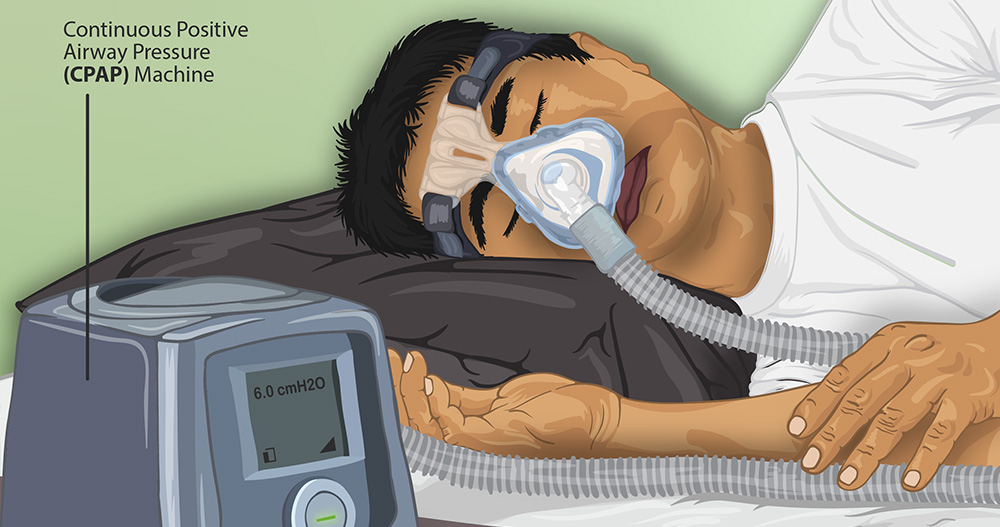
A CPAP machine consists of three components, which are: the CPAP device, the heated humidifier, and the mask. An average of 50% of patients will give up on CPAP treatment because of the amount of time it can take to find a system that works for them. Those who stick with it find that over time they sleep better once they find a machine that best suits them.
Using the machine helps keep your airway open when you sleep. It can reduce your snoring and daytime sleepiness because you will be able to get a more peaceful rest. Using the machine also lowers the risk for high blood pressure that comes with Sleep Apnea.
Most patients feel the positive effects of using the CPAP machine immediately after starting use, but it can come with some minor symptoms such as a runny or stuffy nose. Over time your body will adjust to the extra flow of air, and these symptoms may disappear. If after four weeks of use you don’t see an improvement talk to your doctor and see what can be done.
CBD
Cannabidiol (CBD Oil) is becoming a widely popular substance to treat many ailments. It is a natural oil that is extracted from the hemp plant. It doesn’t contain THC which is the substance that gives off that “high feeling”. CBD does give a calming effect to the body which is why it is thought to be a good treatment for anxiety and depression.

Researchers think CBD oil may change the way your brain reacts to serotonin. It gives off a calming effect which can reduce stress levels. This can improve your mood and help you fall asleep faster.
CBD comes in many different forms so it’s easy to find an option that works for everyone. It can be purchased as oil, powder, creams, sprays, and capsules. It is rare for users to experience side effects, but common ones can include: dizziness, low blood pressure, and irritability. Although CBD Oil is a natural treatment option for depression and anxiety you should still consult your doctor to make sure it’s a good fit for you.
Exercise and Nutrition
Exercise and Nutrition can be a natural alternative to treat depression. Exercise and being in good physical shape can boost confidence levels which may improve symptoms of depression in some people. It can reduce stress and anxiety levels, and promote a better night’s sleep. Regular exercise can also improve cardiovascular health, lower blood pressure, and relieve joint pain.
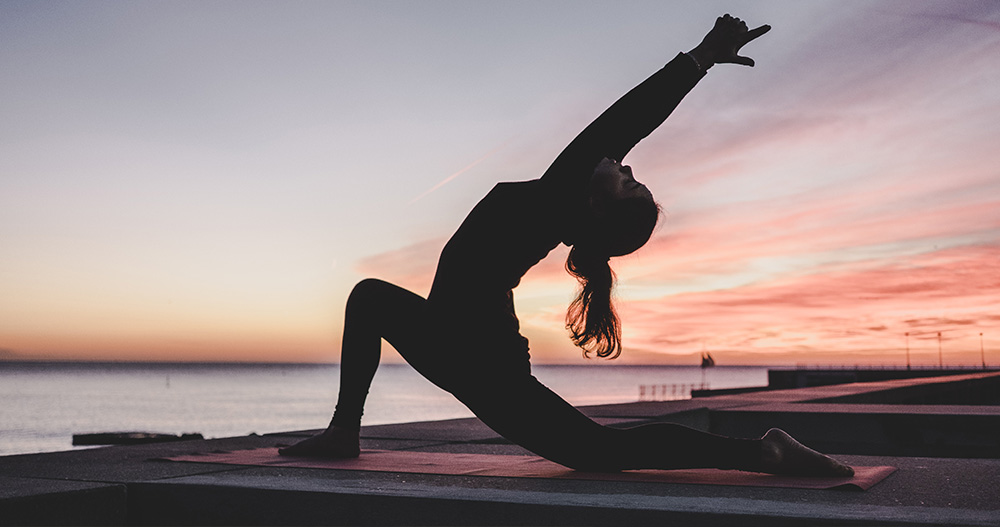
It is recommended that you exercise 30 minutes a day at least three times a week to get the most benefit. Four to five days a week is best, but if you’re a beginner, start out slowly and work your way up from there. Any form of physical exercise will help depression symptoms, so choose something you enjoy!
Walking is a good way to start if you aren’t used to physical activity. There’s very little risk for injury and it can be calming. Group exercise can also help people with depression become more comfortable in a social setting. Sometimes it’s nice to have someone else work beside you so that you don’t feel alone on your fitness journey. Group classes can also be a lot of fun, and there are so many different types. Zumba, Aerobics, and Cycling are among the most popular group glasses.
Eating the proper foods can also help fight depression. A well-nourished body is going to have more energy, and get better rest which can lessen symptoms. Eat foods that are vitamin-rich, and be sure to eat even if you don’t “feel hungry”. Be sure to drink plenty of water to keep your body hydrated. When your body is well taken care of, your mood will be boosted. It also improves overall health.
Meditation
Mediation can be another great way to ease symptoms of depression. Meditating alone won’t eliminate your depression altogether, but it can make the illness more manageable. It can help you change your negative thoughts into positive ones, which can significantly boost mood.

Meditation teaches you to pay close attention to your thoughts and feelings without judging or criticizing yourself. It will help you recognize and accept your thoughts instead of pushing them away. It also helps the body relax and reduces levels of stress. It is recommended to start at the same time every day, even if you just start with five minutes of meditation. Meditation takes time to master so be patient and don’t get discouraged.
Tips for a Better Night’s Sleep
- Turn your bedroom into a sleep sanctuary. Your bedroom should be a place that is dedicated to sleep, rest, and intimacy. Too much noise, light, and too many distractions can make sleep harder to come by. Make your room as dark as possible. Keep the room nice and cool. Try out a white noise machine and see if that helps you sleep. At night when you lie down, if sleep still doesn’t come, get up and move to another room. Keep your room just for sleeping to train your body to rest once you get into bed.
- Keep the same bedtime routine. Develop a bedtime routine that will help the body relax. Try a warm bath with candles and soft music, read a book, or try some bedtime yoga and deep breathing. Find a routine that works best for you, but try to avoid electronics for about an hour before bed. The blue light can stimulate the senses and make it hard to fall asleep. Go to bed every night around the same time to train your body to give in to sleep. Wake up around the same time every day and try to avoid long naps during the day.
- Spend time outside every day. Sunlight is loaded with Vitamin D which has been proven to boost your mood. Spending time in the sun also helps to regulate the body’s circadian rhythm. If you can’t make it outside open the curtains and at least let some natural light in.
- Avoid caffeine and alcohol before bed. Both caffeine and alcohol can overstimulate the body and make it difficult to sleep. Try to stop drinking those beverages about 3-4 hours before bed to ensure a more peaceful rest.
- Keep a sleep log. Keep a journal of the hours you spend asleep to help you establish a trend. Note the times you wake up at night, and how long it took to fall back asleep. Make note of how you feel the next morning, and throughout the day. Be sure to share this log with your doctors or therapists and see if they have any suggestions on how to improve sleep.
Support and Resources for Depression
- If you’re having thoughts of harming yourself or others, call the National Suicide Prevention Hotline. The hotline is available 24/7, free and confidential. Reach them anytime toll-free at 1-800-273-8255 or via chat on their website.
- For emotional support, you can chat with others on forums like The Tribe or PsychCentral.
- Find a health professional that can help. The Anxiety and Depression Association of America has a list of information for caregivers and professionals.
Conclusion
Depression is an illness that affects millions each year. It can cause other sleep disorders to arise. Or can cause extreme tiredness, mood shifts, and loss of interest in things you love. It can make everyday functions seem like impossible tasks. These problems can be resolved and treated over time. Seeking help can significantly improve your quality of life. If left untreated, the issues could continue to worsen.
Disclaimer
If you think you have depression or a related sleep disorder, seek professional medical help. This article will only provide general information and should not be used for self-diagnosis and self-treatment.



